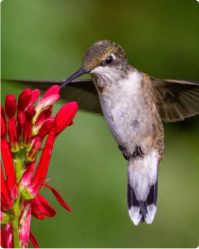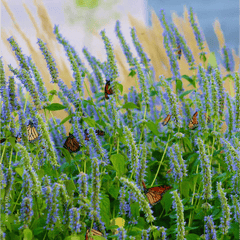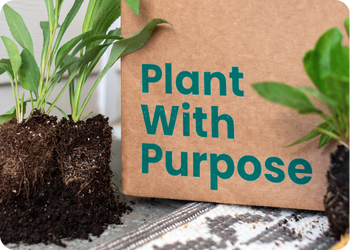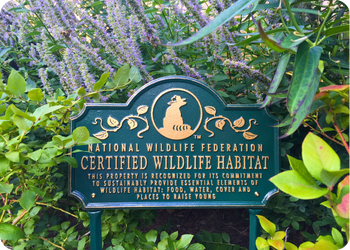How To Help Pollinators During Pollinator Month & Pollinator Week


While the official Pollinator Week is June 20-26; we celebrate pollinators all month–and let’s be honest, year–long at the National Wildlife Federation! June is a great time to plant with a purpose by creating a pollinator-friendly yard or garden.
Why should we celebrate our pollinators? The simple truth is we can’t live without them. Pollination is an essential ecological process. Without pollinators, humans and wildlife wouldn't have much to eat or look at!
Bees are well-known pollinators, but 100,000+ invertebrates— including butterflies, moths, wasps, flies, and beetles—plus many mammals, birds, and reptiles also take on the pollinator job. Pollinators move from plant to plant, fueling up with pollen and nectar. As they move, the pollinators transport and deposit more pollen, fertilizing plants and allowing those plants to reproduce. When you support these pollinators, you’re supporting our own food chain and a much larger, very necessary ecological function.
The great news about Pollinator Month and National Pollinator Week is you can show your support in so many ways! Here are some ideas to get you started:
#1 Plant native plants
Native plants co-evolved with the wildlife of their region and form the foundation of habitat for pollinators by providing them food, cover from the elements and predators, and places where their young can grow. The best way to attract butterflies, bees, and other pollinators is to fill your yard with native plants. From container pots at home, acres of farmland, and corporate campuses to churches and roadside corridors – every site can serve wildlife with native plants. Replacing your lawn with native plants is even better! Habitat opportunities are abundant if you’re willing to put in the work. (We make planting with a purpose easy by curating collections of native plants grown for your region that ship right to your door with all the tips you need. Currently available for 36 U.S. states. Browse our collections).
#2 Avoid pesticides
Help wildlife by eliminating or at a minimum significantly reducing the use of chemical fertilizers, herbicides, and other pesticides. Going chemical-free ensures that your garden is a healthy, safe place for wildlife, as well as your pets and family.
#3 Leave the leaves
Many butterfly and moth species overwinter in the leaf layer, whether it be as eggs, as pupae, or adults. In the case of moths, 94% of species rely on the leaf layer to complete their life cycle. Many singular bees also nest below the leaf litter. If you rake them all up, you’ll be removing important habitat for these beneficial insects, many of which are pollinators. There are many other reasons to leave the leaves!
#4 Share to inspire and inform!
Aside from sharing on social media, it’s especially important to involve your neighbors, homeowners association, community groups, and local legislators. Each individual pollinator garden reaps a collective benefit, but it works best when we’re all working towards the same goal.
- Learn about the Mayors’ Monarch Pledge.
- Ask your senators and members of congress to save America’s vulnerable wildlife by supporting the Recovering America’s Wildlife Act.
- Apply for Certified Wildlife Habitat.
- Show us how your garden grows by adding #GardenForWildlife to your pics on social media.
Follow Garden For Wildlife on all your favorite social media:
GardenForWildlife on Instagram
Garden for WIldlife on Facebook
Garden for Wildlife on Pinterest

Find Native Plants by Zip Code
We took the guesswork out of planting native. Check your zip to see what ships!

















